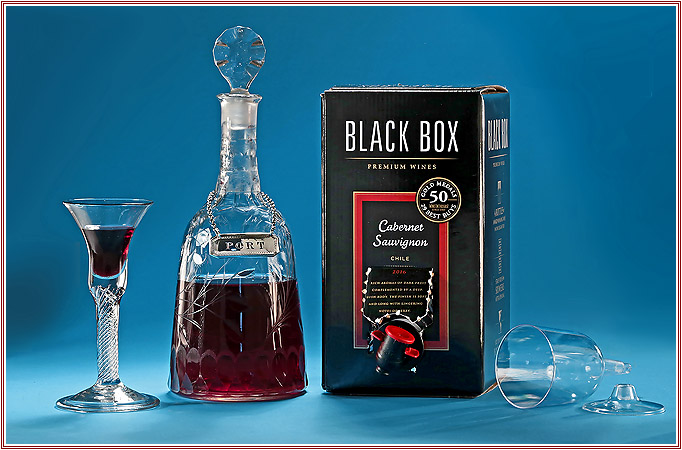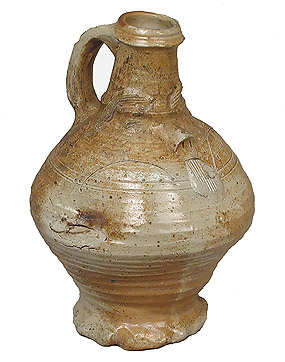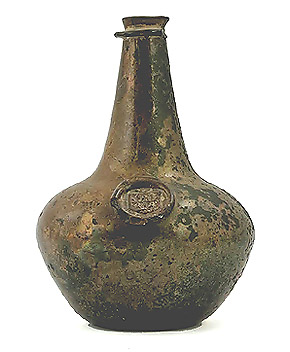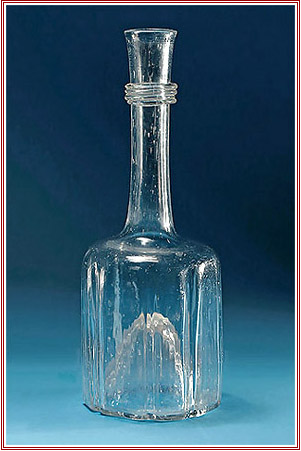|

Whether 'tis nobler in the mind to suffer
Through a tad of washing and polishing ....
Or to take arms against that thought of complete sensory delight
And let "convenience" rule with disposable paper and plastic?
__________________
The Early Vessel :

Metropolitan Museum of Art, New York City
Great Britain's Shakespeare and most certainly the Danish Hamlet
would both have imported casks of wine from the warmer -
and sunnier! -
grape-growing regions of Europe.
(In fact, British wines were
then considered quite poor).
And although Henry VIII is said to have had a
wine fountain with heads of 40 golden lions and brass taps,
wine would have been decanted from a wooden barrel
to a bulbous and maybe brown
Rhineland
earthenware pitcher -
functional,
but often
lacking in much visual pleasure or stimulation -
and with no
recognition of the beautiful colored liquid therein -
a rather "matter of fact
imbibing" of a very expensive beverage.

"Sealed" Wine Bottle, c1660, Courtesy Woolley Wallis, Salisbury, UK
During the mid-17th century, glassmaking was re-introduced into Britain
(that art having been largely lost from the earlier Roman era).
However, 17th century
"decanting bottles" were dark, matte and heavy,
the wine
within indicated by lettering on a
"ticket'"
a piece of
parchment tied with a string on an applied ring at the
bottle neck -
still no visual pleasure of container
or the wine itself
-- rudimentary....
With George Ravenscroft's
late 17th century introduction of
clear
lead glass
emerged the
early (incredible) British wine decanter -
the elegant transparent glass
"carafe", in use by 1720
-
a parchment ticket still tied round the neck for identification.

Early
George II Cruciform
Carafe Decanter England, c1740,
Having 4 wide and 4 narrow moulded panels ;
Collection Bernard Watney
For the first time,
the beauty of the red and amber wines within clear reflective glass vessels
combined visually to elevate wine drinking to a new sensual level.
|